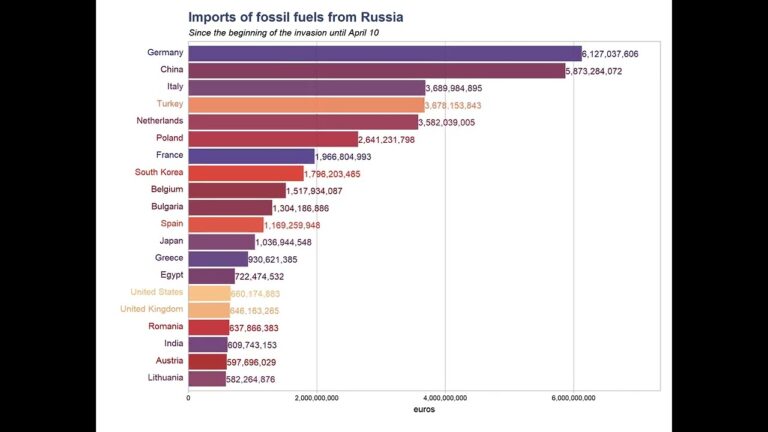DEMOLITION WASTE MANAGEMENT: DRAFT REGULATION FINALLY DEVELOPED
The Ministry of Environment and Natural Resources of Ukraine and the Ministry for Communities and Territories Development of Ukraine developed a much-needed by-law, which should help local and military administrations to deal with waste generated as a result of the demolition or destruction of various objects by the occupier. In response to its information request, EPL received and analyzed draft Regulation on managing waste generated as a result of damage to buildings and structures caused by hostilities, acts of terrorism, sabotage or works to eliminate their consequences.
We would like to share our thoughts on this document. The Regulation contains a number of shortcomings that leave local self-government bodies and military administrations alone with their problems related to management of demolition waste, and does not protect the environment from the harmful effects of such waste. Also, the regulation does not contribute to recycling and reuse of demolition waste, nor does it address the problem of hazardous waste contained in demolition waste and provide detailed algorithms of handling it and financial mechanisms of paying for such services to licensed organizations. Moreover, the draft does not take into account the economic factor, which is often decisive, namely: is it profitable to take all the waste to one place for sorting and recycling, or can the waste be shredded first at the place of its generation in order to reduce its volume, which will lead to savings in transport costs?
The regulation gives definition of demolition – these are parts (debris) of damaged (destroyed) objects, as well as materials, objects that were inside or near such objects at the time of damage (destruction) and/or performance of dismantling works (full or partial ), and which have completely or partially lost their consumer properties and have no further use at the place of their formation or discovery.
According to the Regulation, who is responsible for managing demolition waste?
Organization of demolition waste management is performed by its owner:
-
by the owner of the object, damage of which generated waste or an owner or a user of the land plot where this waste is placed;
-
by an authorized body in charge of demolition waste on streets and roads of populated areas, public roads, public places, including on the territories of parks, squares, embankments, residential areas, beaches, cemeteries, etc. (including those brought to the specified territories by a shock-air wave as a result of the impact of weapons, explosions). In this wording of the Regulation it is not entirely clear who owns the facility from which the demolition waste was generated, especially in the case of demolition of multi-apartment buildings, in the context of responsibility for organization of operations with demolition waste. Each multy-storey building is a common property of all apartment owners in it. Therefore, the responsibility will rest on owners of the apartments in this multi-storey building. However, such formulation will be ineffective under the conditions of frequent evacuation or even death of residents of apartments located in the war zone .In practice, such an obligation will be transferred to the authorized bodies (in the Regulation, these are the executive bodies of the village, town, city council, and in its absence – the military administration).
The Regulation imposes on the authorized bodies the duty of accounting demolition waste. Waste accounting methods are not detailed. It is also indicated that such accounting is performed in temporary storage places, however, for planning the transportation of such waste from the place of generation to the place of storage, it is necessary to determine the volume or weight of such waste. However, the Regulation does not include methods for estimating the amount of such waste.
International organizations and experts have identified methods that have been tested during armed conflicts in Syria, Iraq and other places, developed formulas for this (more details about the formula can be found here: https://www.undp.org/lebanon/publications/demolition-waste-assessment-outside-port-beirut). There are also applications for smartphones for calculating the amount of demolition waste. Therefore, relevant ministries should detail the methods of calculating amounts of demolition waste to facilitate its accounting. It is obvious that in case of impracticality (including economic) of removing demolition waste to places of temporary storage of such waste, accounting of such waste should be performed by the authorized body at the place of its generation. In addition, not all demolition waste can end up in temporary storage sites due to its danger to the environment or public health, so it is advisable to keep records of it at the place of its generation.
Regulation of managing hazardous waste contained in demolition waste is completely unclear and will lead to uncontrolled pollution of the environment by hazardous waste. The reference to Article 34 of the Law “On Waste” for solving such situations is not entirely appropriate and requires additional clarification because demolition waste may contain various types of hazardous waste, which must be promptly collected and transferred to a safe place for temporary storage or to specially equipped places (if such can be provided by authorized bodies), and arrange their disposal by a licensed company and pay for such services. From clause 13, it is not clear who will pay for such services, and article 34 does not provide an answer to this question, because it mainly concerns the obligations of economic entities that generate hazardous waste or possess it. It should also be taken into account that before the full-scale invasion by russia, management of hazardous waste at the level of administrative-territorial units was quite poor, and the level of environmental awareness of officials was quite low, so the Regulation should describe in more detail how to protect the environment from negative impact of hazardous waste contained in demolition waste. For example, when sorting debris, electrical waste and air conditioning waste can be found, which contain coolants with significant ozone-depleting potential. Such waste should be disposed of separately and refrigerants should not leak. Waste batteries and accumulators, which, when damaged, can contaminate soil and water with heavy metals, also deserve separate handling. Mercury-containing lamps are also dangerous for the environment, in particular, if the glass of the lamp is damaged, mercury can evaporate into the air and seep into the ground with precipitation. Therefore, it is important to separate such waste, if possible, from other safe waste, ensure a closed place for its storage and transfer it to licensed organizations.
The draft Regulation contains a manipulative norm that will strengthen already existing illegal and often criminal economic activity in the management of hazardous waste by companies that do not have equipment for handling such waste, and have not gone through EIA procedure. The draft Regulation specifies that activities related to the management of demolition waste is performed as part of the restoration work to eliminate the consequences of armed aggression and hostilities during martial law and in the reconstruction period after the end of hostilities, and are not subject to environmental impact assessment (EIA). However, this formulation is not entirely correct and will generate manipulations, as it will be a cover for all operations with any waste (mixed waste, hazardous waste, vehicles, household appliances, industrial waste), even those that are conducted in the territory of Ukraine where no active hostilities took place. In addition, the legislation does not define the duration of the recovery period, which will generate an endless period of “exemption” from EIA. Therefore, it is more expedient to refer to the current version of Clause 1 of Article 3 of the Law “On Environmental Impact Assessment” (by the way, the Ministry of Environment plans to make changes to this norm).
The Regulation provides for an obligation for the authorized body within one year from the date of termination or abolition of martial law, to ensure disposal or removal of relevant demolition waste. However, the draft Regulation does not provide for a mechanism of monitoring disposal or removal of such demolition waste, primarily from places of temporary storage, there is no obligation of an authorized body to notify the regional military administrations and the Ministry for Communities and Territories Development of Ukraine (and the Ministry of the Environment) about complete disposal or removal of demolition waste from places of its temporary storage.
In connection with the above, we propose to the Ministry of Environment and the Ministry for Communities and Territories Development of Ukraine to amend the draft Regulation on management of waste generated in connection with damage to buildings and structures as a result of hostilities, terrorist acts, sabotage or performing works to eliminate their consequences, taking into account the comments provided by EPL, to reduce the risk to the environment and human health caused by such waste.






